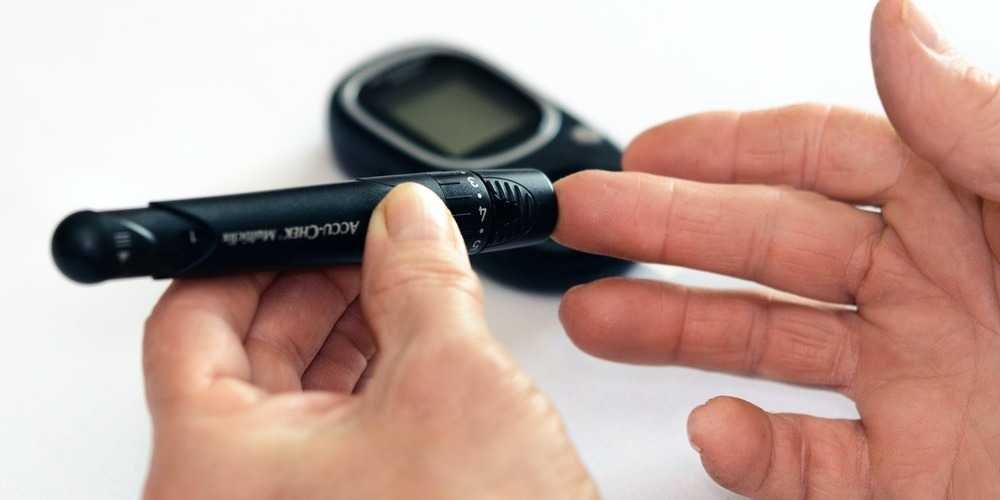
What is the Normal Value of Glycated Hemoglobin? How to Improve it if it is too High? Blood Sugar Normal Value Comparison Table Released
Glycated hemoglobin is one of the diagnostic criteria for diabetes. It is usually combined with pre-meal fasting blood sugar, post-meal blood sugar and clinical symptoms to determine whether you have diabetes. What exactly is glycated hemoglobin? What is the normal value? If it is too high, how can it be improved? This article will give you a detailed explanation at once.
What is glycated hemoglobin (HbA1c)?
Heme is a protein in red blood cells that carries oxygen and carbon dioxide in the blood. When the body converts starchy foods into glucose and transports it throughout the body through the blood, the glucose combines with heme to form glycated hemoglobin (HbA1C).
Once heme is combined, it will continue to remain in the same state until the red blood cell dies, so the higher the blood sugar, the higher the proportion of glycated hemoglobin.
Generally, the life span of red blood cells is about 120 days, so glycated hemoglobin can reflect the blood sugar status 3 to 4 months before the blood draw.
What is the normal value of glycated hemoglobin (HbA1c)?
The normal value of glycated hemoglobin is between 4.0 and 5.6%. If the value falls between 5.7 and 6.4%, it is on the high side and there is a risk of diabetes. If it is above 6.5%, diabetes can be diagnosed.
It is generally recommended to control glycated hemoglobin below 7%. If it is higher than 7%, the chance of diabetic complications or functional disorders will increase by 1.21 times each year.
How often should glycated hemoglobin be tested?
When you first receive treatment for diabetes, you need to check your glycated hemoglobin and maintain a follow-up frequency of three months to determine whether the blood sugar test value is correct and whether the current treatment and care plan is successful. If your blood sugar is properly controlled, you can follow the doctor’s instructions It is recommended to increase the frequency of inspections.
How to convert glycated hemoglobin to average blood sugar?
Glycated hemoglobin can be used to convert average blood sugar in the past 3 months. The formula is as follows:
Average blood sugar in the past 3 months (mg/dL) = (HbA1C-5) × 35 + 100
For example, if the glycated hemoglobin (HbA1C) is 9%, the conversion formula and result are:
(9-5) x 35 + 100 = 240 mg/dL.
Glycated hemoglobin-normal blood sugar value comparison table
The following provides a comparison table of glycated hemoglobin and blood sugar:

How to improve high glycosylated hemoglobin?
Glycated hemoglobin is most suitable for judging whether the blood sugar of diabetics is under stable long-term control. If the glycated hemoglobin is too high, you need to improve your diet, life and other aspects to control long-term high blood sugar. Here are 4 suggestions:
- Regular exercise:
Obesity can easily lead to diabetes, and exercise can help control weight, improve insulin sensitivity and blood sugar utilization efficiency. - Eat less carbohydrates and more dietary fiber:
Sugars (carbohydrates) can cause blood sugar to rise, while dietary fiber can delay the digestion and absorption of sugars and help control blood sugar. - Take medicine on time:
If you have actively controlled your diet and exercise regularly, but your blood sugar still cannot drop, you must take medicine regularly to control your blood sugar within the normal range to avoid complications. - Regularly monitor blood sugar:
Blood sugar monitoring can confirm the effectiveness of current diet, lifestyle adjustments, and drug treatment. If the results are not good, diet content and medication can be adjusted on a rolling basis.
f4 group of people recommend using sugar-stabilizing products to regulate blood sugar and maintain body functions.
In addition to the above improvement methods, the following four ethnic groups are recommended to use sugar-stabilizing products in moderation to regulate blood sugar and maintain body functions.
- Those with high or excessive glycosylated hemoglobin
- Those with large blood sugar fluctuations
- People with poor body circulation
- People who eat out frequently and like starchy or sweet foods
The most popular sugar-stabilizing product in recent years is “bitter melon peptide”. Bitter melon peptide is a small molecule protein composed of a variety of amino acids. It has the functions of stimulating insulin secretion and simulating insulin. In addition to helping to regulate blood sugar, In addition to delaying blood sugar absorption, it can also improve metabolism and strengthen body functions.
There are many bitter melon peptide products on the market, and the effective dosages and formulas of different brands are slightly different. It is recommended to choose products that meet the following conditions to help regulate blood sugar:
- Choose supercritical extraction technology to be more pure:
such as the Japanese patented ConstanGI® bitter melon peptide, which is 20 times concentrated and retains a large amount of active peptides. - Active bitter melon peptide reaches 800U, effective intake reaches 300 mg:
effectively reduces fluctuations, regulates blood sugar and maintains stability - The compound contains cinnamon extract from the U.S. patented Cinnulin PF®:
it strengthens metabolic circulation in the body and helps diabetic patients with blood sugar metabolism after meals. - Combined with more than 200 micrograms of U.S. patented chromium and an appropriate amount of zinc:
Help increase insulin action, maintain normal metabolism of sugar, and strengthen stable regulation












